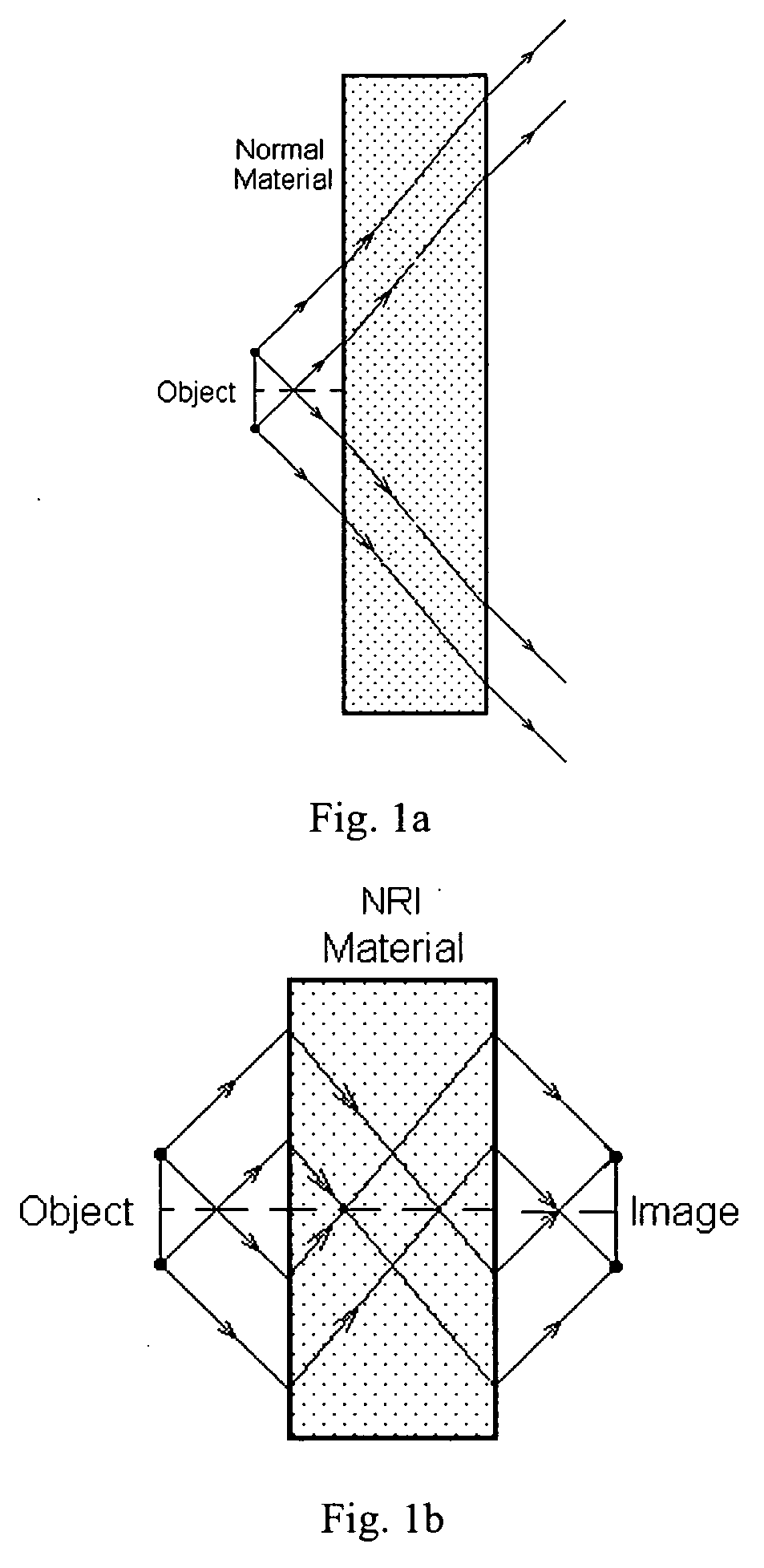Negative refractive index and opto-magnetic materials and method of fabricating same
a negative refractive index and optomagnetic material technology, applied in the field of negative refractive index and optomagnetic materials, can solve the problems of material with negative magnetic permeability, no such material has been manufactured for optical and ir wavelengths, and the limit of both types of lenses are well known. , to achieve the effect of reducing the consumption of chemicals and shortening the processing tim
- Summary
- Abstract
- Description
- Claims
- Application Information
AI Technical Summary
Benefits of technology
Problems solved by technology
Method used
Image
Examples
Embodiment Construction
[0064] According to the first exemplary illustrative non-limiting implementation, a negative refractive index material exhibiting negative refraction for at least some directions of light propagation through said material, for at least some polarization state of said light, over at least some wavelength range within the IR spectrum can be realized by creating a structure consisting of a several lattices of wire pairs such that in each of these lattices, said metal wire pairs are “aligned” such that both the metal wire directions and the planes of wire pairs are essentially parallel to each other, while the wire pairs belonging to different sublattices have either wire directions or planes of wires not parallel. The metal wire pairs in each of said sublattices can be either spatially ordered or disordered (i.e., random).
[0065] The properties of such material can be understood from the following theoretical formalism: For the composite material of the present exemplary illustrative n...
PUM
 Login to View More
Login to View More Abstract
Description
Claims
Application Information
 Login to View More
Login to View More - R&D
- Intellectual Property
- Life Sciences
- Materials
- Tech Scout
- Unparalleled Data Quality
- Higher Quality Content
- 60% Fewer Hallucinations
Browse by: Latest US Patents, China's latest patents, Technical Efficacy Thesaurus, Application Domain, Technology Topic, Popular Technical Reports.
© 2025 PatSnap. All rights reserved.Legal|Privacy policy|Modern Slavery Act Transparency Statement|Sitemap|About US| Contact US: help@patsnap.com



